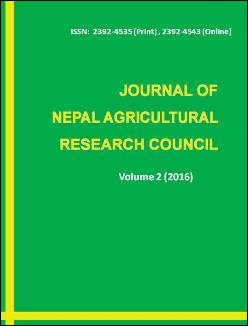Enabling Water-Energy–Food Nexus: A New Approach for Sustainable Agriculture and Food Security in Mountainous Landlocked Countries
DOI:
https://doi.org/10.3126/jnarc.v2i0.16121Keywords:
watershed, hydropower, agriculture, landlocked, economyAbstract
Majority of landlocked mountainous countries are poorly ranked in Human Development Index (HDI), mostly due to poor per capita agriculture production, increasing population, unemployment, expensive and delayed transportation including several other factors. Generally, economy of such countries substantially relies on subsistence agriculture, tourism, hydropower and largely on remittance etc. Recently, it has been argued that to utilize scarce suitable land efficiently for food production, poor inland transport, hydropower, irrigation, drinking water in integration with other developmental infrastructures, an overarching policy linking water - energy – food nexus within a country for combating water, energy and food security would be most relevant. Thus, in present paper it has been opined that promotion of such linkage via nexus approach is the key to sustainable development of landlocked mountainous countries. Major land mass in mountainous countries like Nepal remains unsuitable for agriculture, road and other infrastructure profoundly imposing food, nutrition and energy security. However, large pristine snowy mountains function as wildlife sanctuaries, pastures, watershed, recharge areas for regional and global water, food and energy security. In return, landlocked mountainous countries are offered certain international leverages. For more judicious trade off, it is recommended that specific countries aerial coverage of mountains would be more appropriate basis for such leverages. Moreover, for sustainability of mountainous countries an integrated approach enabling water - energy – food nexus via watershed-hydropower-irrigation-aquaculture-agriculture-integrated linking policy model is proposed. This model would enable protection of watershed for pico, micro, and mega hydro power plants and tail waters to be used for aquaculture or irrigation or drinking water purposes for food and nutrition security.
Downloads
Downloads
Published
How to Cite
Issue
Section
License
This license enables reusers to distribute, remix, adapt, and build upon the material in any medium or format for noncommercial purposes only, and only so long as attribution is given to the creator.




